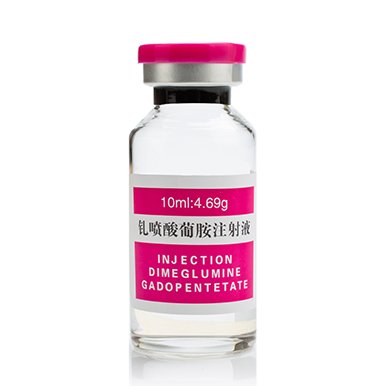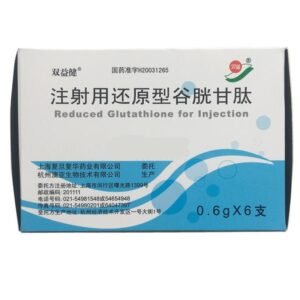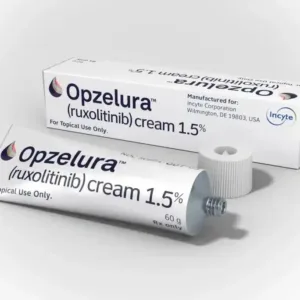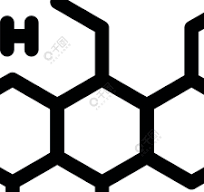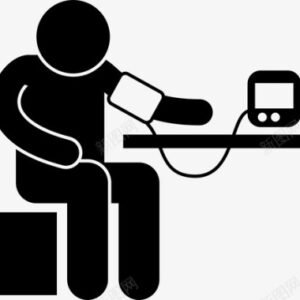Dimeglnmine Gadopentetate Injection.
Effects and Benefits:
For diagnosis, intravenous administration only: Magnetic resonance imaging (MRI) of the brain and spinal cord is particularly useful for confirming tumors and for further differential diagnosis of suspected meningiomas, (auditory) neurothecomas, invasive tumors (such as gliomas), and tumor metastases. Used to confirm small tumors and/or isointense tumors; suspected recurrence of tumors after surgery or radiotherapy; distinguish between rare tumors such as hemangiomas, ependymomas, and small pituitary adenomas; and further determine the spread of non-brain-derived tumors. In addition, spinal cord MRI is also used to distinguish between intramedullary and extramedullary tumors; to show areas of solid tumors in known fistulas; and to determine the spread of intramedullary tumors. Whole-body MRI includes facial skull, neck, chest and abdomen including the heart, female breast, pelvis, and active and passive motor limbs, and whole-body vascular imaging. Gadopentetate dimeglumine contrast imaging can provide the following diagnostic information: used to confirm or exclude tumors, inflammation and vascular lesions; used to determine the spread and boundaries of these lesions; used to distinguish the internal structure of lesions; used to evaluate the circulation status of normal tissues and pathologically altered tissues; used to distinguish between treated tumors and scar tissues; used to confirm recurrent disc herniation after surgery; used to combine anatomical organ diagnosis for semi-quantitative evaluation of renal function. This product oral preparation and injection can be used to treat mild, moderate and severe infections caused by sensitive strains of the following bacteria in adults.
Usage and Dosage:
For injection in adults, adolescents and children (including newborns and infants) for cranial and spinal MRI. Generally, 0.2ml/kg body weight (equivalent to 0.1mmol gadopentetate dimeglumine per kilogram of body weight) of gadopentetate dimeglumine injection can achieve good enhancement effect and meet clinical needs. If the contrast-enhanced MRI is normal, but the clinical suspicion of the presence of lesions is still high, for adults, immediately injecting 0.2ml or 0.4ml/kg body weight of gadopentetate dimeglumine injection within 30 minutes after MRI may increase the amount of diagnostic information of the examination. To exclude metastasis or recurrence in adults, 0.6 ml/kg of gadopentetate meglumine injection can often improve the confidence of diagnosis. Maximum dose: 0.6 ml/kg (adults) or 0.4 ml/kg (children). Do not draw gadopentetate meglumine injection into the syringe unless the examination is immediate. The rubber stopper can only be punctured once. Any contrast agent solution not used up in one examination must be discarded. For injection in adults, adolescents and children for whole-body MRI. Generally, 0.2 ml/kg of gadopentetate meglumine injection can achieve good enhancement effect and meet clinical needs. In special cases, such as lesions with few blood vessels and/or small extracellular spaces, especially when using relatively mild T1-weighted scanning sequences, 0.4 ml/kg of gadopentetate meglumine injection may be needed to obtain adequate contrast effect. To exclude lesions or tumor recurrence in adults, 0.6 ml/kg of gadopentetate meglumine injection can improve the confidence of diagnosis. To make the blood vessels clearly visible, adults may need to be injected with 0.6ml/kg of body weight of gadopentetate dimeglumine injection, depending on the examination site and examination technique. Maximum dose: 0.6ml/kg (adult) or 0.4ml/kg (child). Children (under 2 years old): There is limited experience in using gadopentetate dimeglumine injection for “whole body MRI”. The dose required for newborns and infants should be given by hand, and automatic syringes should not be used to avoid injury. Please follow the doctor’s advice for details.
Adverse reactions:
Side effects such as headache, nausea, vomiting, and injection site reactions (such as pain, chills, and fever) may occur after medication. Extravasation of the drug solution may cause tissue pain. The side effects of gadopentetate dimeglumine are proportional to the dose of the drug. The higher the dose, the more obvious the side effects may be, and the higher the incidence. There are also some rare serious life-threatening reactions or reports of death. Therefore, it must be used in a hospital with corresponding rescue equipment, and it can only be used after standardized treatment by a doctor. Renal Impairment Acute renal failure requiring dialysis (acute renal injury) or worsening renal function has occurred in patients with renal impairment, most often within 48 hours of Gdpentetate Diglumine injection. The risk of acute renal failure increases with the dose of contrast agent. The benefits and risks must be carefully weighed before using this product in patients with chronic renal impairment, as contrast agents are slowly cleared from the body in these patients. Because Gdpentetate Diglumine is excreted by the kidneys, sufficient time must be allowed for the contrast agent to be cleared from the body before repeat administration in patients with renal impairment. Seizures There have been rare reports of an increased risk of seizures with Gdpentetate Diglumine in patients with epilepsy or intracranial lesions. Precautions should be taken for patients who are prone to seizures, such as close monitoring and the availability of all necessary equipment and medications to manage possible seizures. Gadolinium Deposition Gdpentetate Diglumine is a gadolinium-based contrast agent (GBCAs). Current evidence suggests that trace amounts of gadolinium may remain in the brain and other body tissues after repeated use of GBCAs. Studies have reported that repeated use of GBCAs can cause increased brain signal intensity, especially in the dentate nucleus and globus pallidus. Currently, there are more reports on linear GBCAs and fewer reports on macrocyclic GBCAs. Animal experimental studies have shown that gadolinium deposition is higher after repeated use of linear GBCAs than after repeated use of macrocyclics. The clinical significance of gadolinium deposition in the brain is still unclear. In order to minimize the potential risks associated with gadolinium deposition in the brain, it must be used strictly in accordance with the indications and approved doses. It is recommended to use the lowest approved dose that meets the diagnosis and conduct a careful benefit-risk assessment and informed patient communication before repeated administration. In addition, gadopentetate dimeglumine may also cause serious side effects, such as nephrogenic systemic fibrosis (which may manifest as burning, itching, swelling or scaly changes on the skin, red or black spots on the skin, hardening or tightening of the skin, joint stiffness, muscle weakness, hip or rib pain, and difficulty in moving, bending or knowing the hands, arms, feet, and legs), allergic reactions, and even anaphylactic shock.
Drug contraindications:
This product is contraindicated if you are allergic to it or have renal impairment
View the rest of the content
Share:
Products
Our offers
Health Classification
Let us work together to protect precious health

